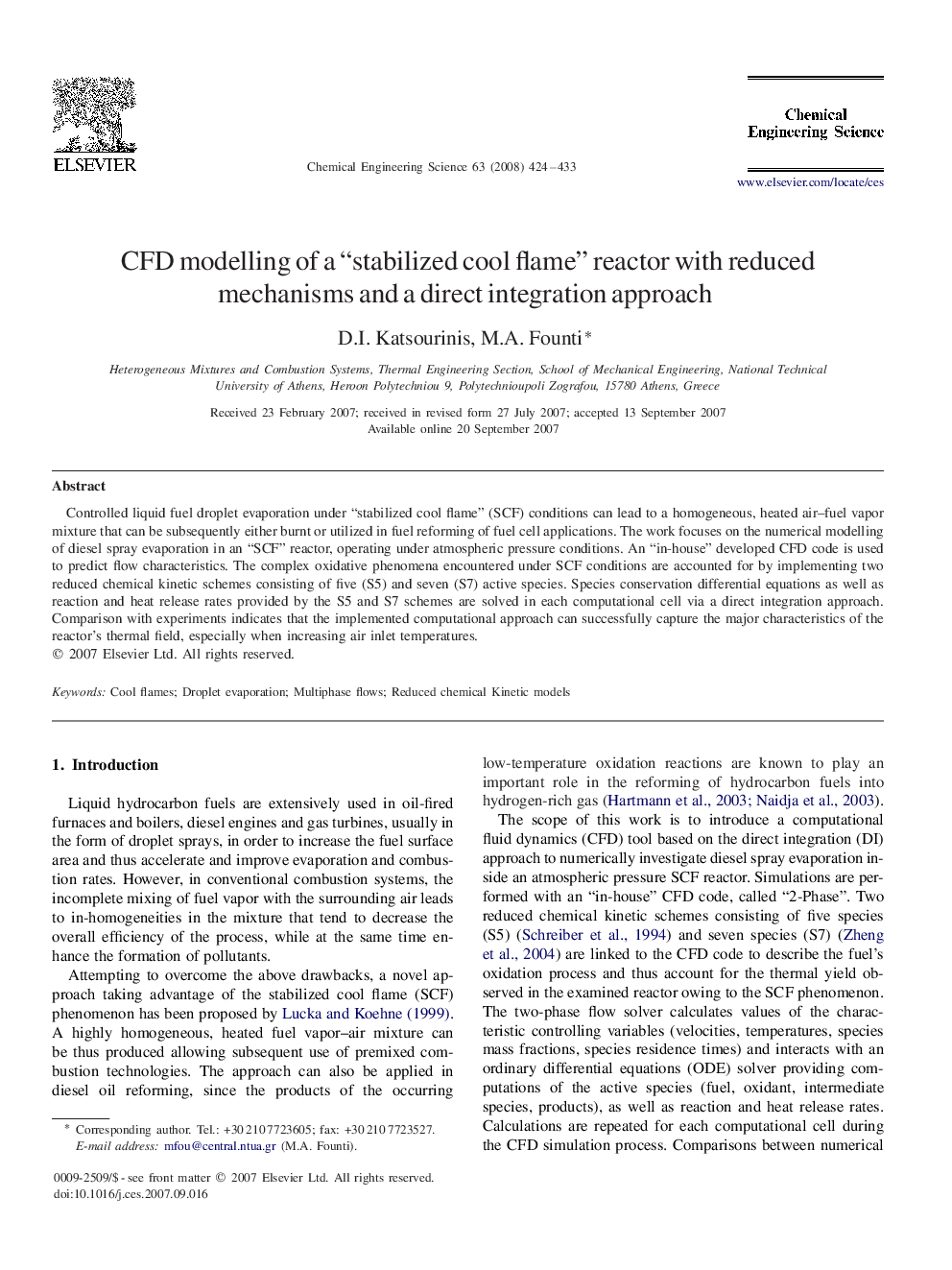| Article ID | Journal | Published Year | Pages | File Type |
|---|---|---|---|---|
| 157999 | Chemical Engineering Science | 2008 | 10 Pages |
Abstract
Controlled liquid fuels droplet evaporation under “stabilized cool flame” (SCF) conditions can lead to a homogeneous, heated air-fuel vapor mixture that can be subsequently either burnt or utilized in fuel reforming of fuel cell applications. The work focuses on the numerical modelling of diesel spray evaporation in an “SCF” reactor, operating under atmospheric pressure conditions. An “in-house” developed CFD code is used to predict flow characteristics. The complex oxidative phenomena encountered under SCF conditions are accounted for by implementing two reduced chemical kinetic schemes consisting of five (S5) and seven (S7) active species. Species conservation differential equations as well as reaction and heat release rates provided by the S5 and S7 schemes are solved in each computational cell via a direct integration approach. Comparison with experiments indicates that the implemented computational approach can successfully capture the major characteristics of the reactor's thermal field, especially when increasing air inlet temperatures.
Related Topics
Physical Sciences and Engineering
Chemical Engineering
Chemical Engineering (General)
Authors
D.I. Katsourinis, M.A. Founti,
